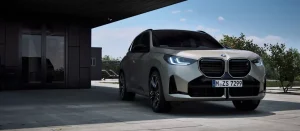The Evolution of Displays in the Automotive Cockpit

The advancement of digital technology and Moore’s Law have made it possible to integrate different domains and technologies, including the automotive cockpit. Future displays will include inter-domain communication and addition of new domains. New requirements for the automotive cockpit have changed the nature of automotive displays, leading to curved multi-display dashboards and camera integration. New demands for automotive display performance continue to grow. Here are three ways to keep up with this technology:
Digital displays offer many advantages. They enable large-scale and individually accessible displays, and they make navigation simpler and more intuitive. The display’s ability to blend into the surface of the automobile provides a new experience that’s immersive and intuitive. Display diagonals are correlated to horsepower, and the user experience should be seamless and intuitive. With the growing importance of safety, manufacturers are focusing on simplifying the design. The automotive cockpit display has become the center of a driver’s life.
Digital display technology is increasing in popularity. More cars are coming with dedicated center stack displays, as well as a digital instrument cluster. As more car manufacturers adopt digital technology, the cost of such displays comes down. For example, Honda announced a new budget-conscious vehicle in 2019 that has five displays on its dashboard, including a digital rearview mirror. New vehicle models are also expected to feature more displays, including a dedicated HVAC display and digital rearview mirror.
Stretch LCDs are being used in the automotive cockpit. Stretch LCDs are a form of curved display that can wrap the entire dashboard, allowing the driver to experience a complete e-cockpit experience. Stretch screens allow the driver to view more information on the dashboard, while passengers can read the data displayed on an enlarged stretch LCD. These new displays are the future of the automotive cockpit. It’s an exciting time for automotive technology.
The evolution of displays in the automotive cockpit continues to progress at a rapid pace. OLED technology has the potential to provide more consistent contrast and color diversity across a wide range of viewing angles. They are especially attractive to the passenger because of their bright color and vibrant contrast. This technology is expected to be available by 2025. In addition to improving visibility, OLED displays must also be able to handle harsh conditions. A high-end automotive vehicle display will have a 10X better contrast compared to an LCD panel.
While digital instrument clusters were first developed for expensive vehicles, they are now trickling down to lower-priced models. Volkswagen’s 12.3″ Digital Cockpit is available in European and US models, and its 11.7″ version will soon be in the T-Roc and Polo. The adoption of digital instrument clusters will continue to increase throughout the next decade, with the industry-wide market share growing to 34.1% in 2026.
Displays have come a long way since the advent of the mobile phone, and now include a wide range of features. Automotive infotainment systems continue to improve and advance, while consumer demand for smartphones in cars continues to rise. In addition to improving driver safety, cockpit displays also increase efficiency and safety while driving. The automotive cockpit display market is expected to grow at a CAGR of 2.5% by 2020 and is forecasted to reach $4398.2 million by 2020.




